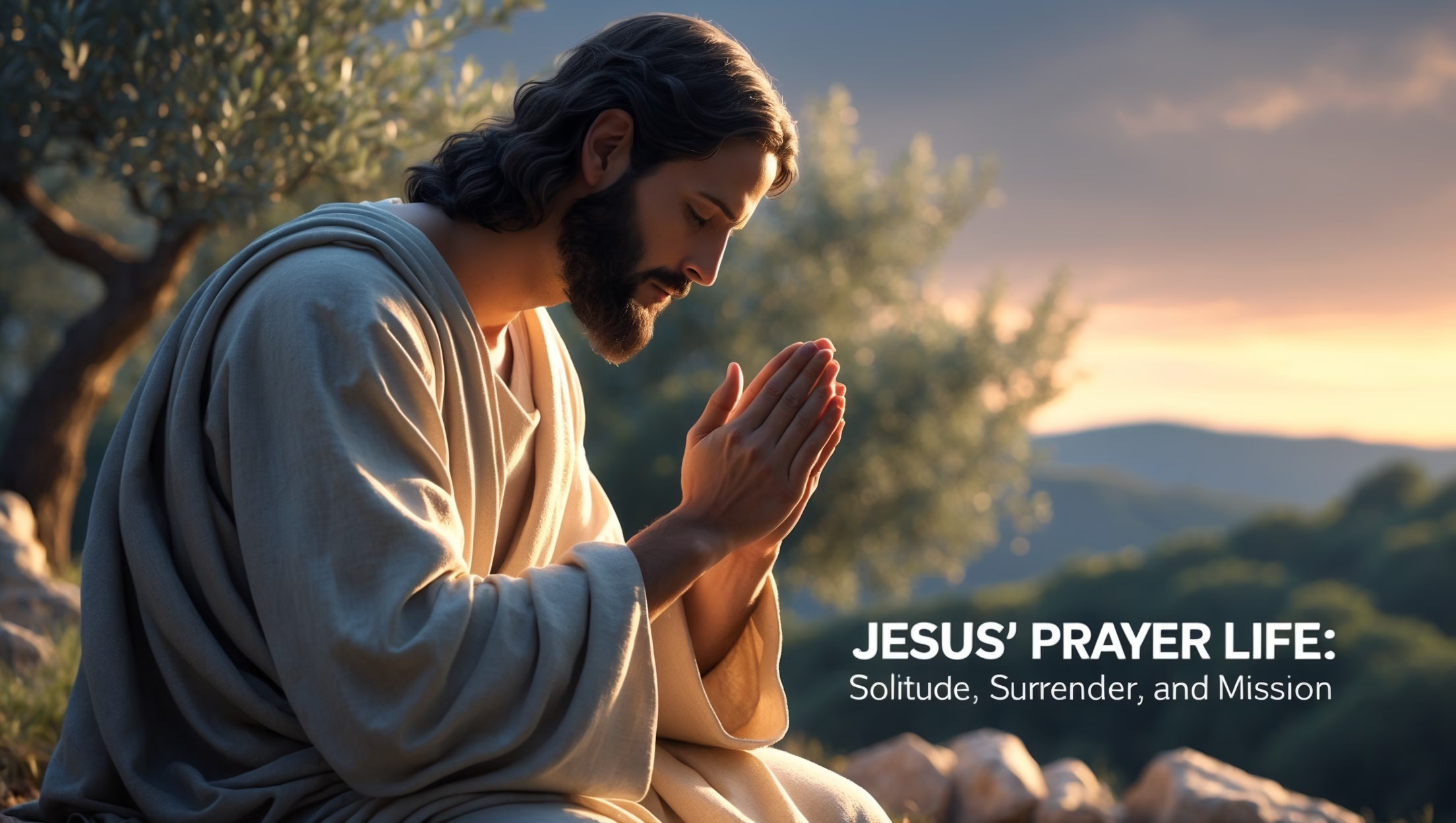While crowds clamored for miracles and disciples jockeyed for position, Jesus repeatedly withdrew to pray. His prayer life, glimpsed across the Gospels, was not merely religious ritual but the pulsating heartbeat of His ministry. Through prayer, Jesus discerned His mission, shaped His choices, and modeled a profound relationship with God for all who would follow Him.
The Solitary Hours That Shaped History
Scripture offers several snapshots of Jesus in prayer: at dawn before a busy day of ministry (Mark 1:35), all night before selecting His disciples (Luke 6:12), in deep anguish at Gethsemane (Matthew 26:36-44), and even while dying on the cross (Luke 23:34). These were not formal obligations but vital acts of communion with the Father. Jesus exemplified that the mission of God flows from sustained, intentional connection with God.
The historical context underscores the radical nature of this practice. In first-century Judea, rabbis and religious leaders often prayed in public to display piety. Jesus, however, sought solitude, emphasizing authenticity and personal dependence over ritual performance. His prayer life was countercultural: intimate, disciplined, and transformative.

Four Revolutionary Aspects of Jesus’ Prayer Life
1. The Prayer of Dependence
Before each pivotal decision, Jesus withdrew to pray. His nightlong prayer prior to choosing the Twelve apostles (Luke 6:12-16) demonstrates this dependence. The resulting group included both a zealot revolutionary and a tax collector who collaborated with Rome, illustrating how prayer can reconcile diverse perspectives and forge a community embodying God’s Kingdom.
2. The Prayer of Intimacy
Jesus frequently addressed God as “Abba” (Mark 14:36), the Aramaic term children used for father. This intimate language broke conventional religious formalism, portraying God not as a distant potentate but as a tender, loving parent. By modeling this intimacy, Jesus invited followers into a relationship with God characterized by trust, love, and vulnerability.
3. The Prayer of Submission
Gethsemane’s anguished plea—“not my will but yours” (Luke 22:42)—reveals a pattern of active surrender. This was not passive resignation; it was deliberate entrustment to God’s wisdom amid uncertainty and suffering. Prayer, for Jesus, aligned human action with divine purpose, showing that spiritual power flows from obedience and submission.
4. The Prayer of Mission
Jesus’ high priestly prayer in John 17 demonstrates that His intercession extended beyond His immediate circle: “for those who will believe through their message” (John 17:20). Prayer fueled His mission, linking His ministry to future generations. His intercession reminds believers that prayer is both personal and communal, connecting us to the broader work of God in the world.
The Paradox of the Divine Son Praying
Though fully divine, the incarnate Christ prayed continuously. This paradox highlights both His genuine humanity and His dependence on the Father. If the Son relied so profoundly on prayer, then human reliance on God becomes not optional but essential. Prayer is the conduit through which God’s presence, guidance, and power shape life and ministry.
Practical Lessons for Modern Believers
Jesus’ prayer life provides a model for contemporary discipleship:
- A Pattern: Regular withdrawal to solitude, setting intentional times for prayer.
- A Posture: Childlike dependence combined with reverent submission to God’s will.
- A Promise: The same Father who heard and answered Jesus’ prayers listens to us today.
In an era dominated by constant activity, notifications, and digital distractions, Christ’s example reminds believers to create rhythms of stillness, reflection, and communion with God. Prayer is not ancillary to ministry—it is its lifeblood.
Historical and Theological Significance
Jesus’ prayers are deeply rooted in Jewish tradition, echoing practices of fasting, temple devotion, and intimate dialogue with God, yet He reshaped them for the new covenant. Theologically, His prayer life illustrates the relational nature of God, the importance of discernment, and the ethical imperative to align action with divine will. Historically, it provides a window into how Jesus navigated immense pressure, opposition, and suffering while maintaining unwavering dependence on God.
Conclusion: Prayer as the Heartbeat of the Kingdom
The prayer life of Jesus invites believers into a rhythm that transcends ritual. It shows that true ministry begins and continues in communion with God, that leadership flows from dependence, and that spiritual power arises from intimacy with the Father. By following His example, modern disciples can experience guidance, transformation, and deep alignment with the mission of God. In solitude, in anguish, in triumph, and in ordinary days, Jesus’ prayer life reveals the hidden rhythm that sustains both the Son and those who follow Him.








